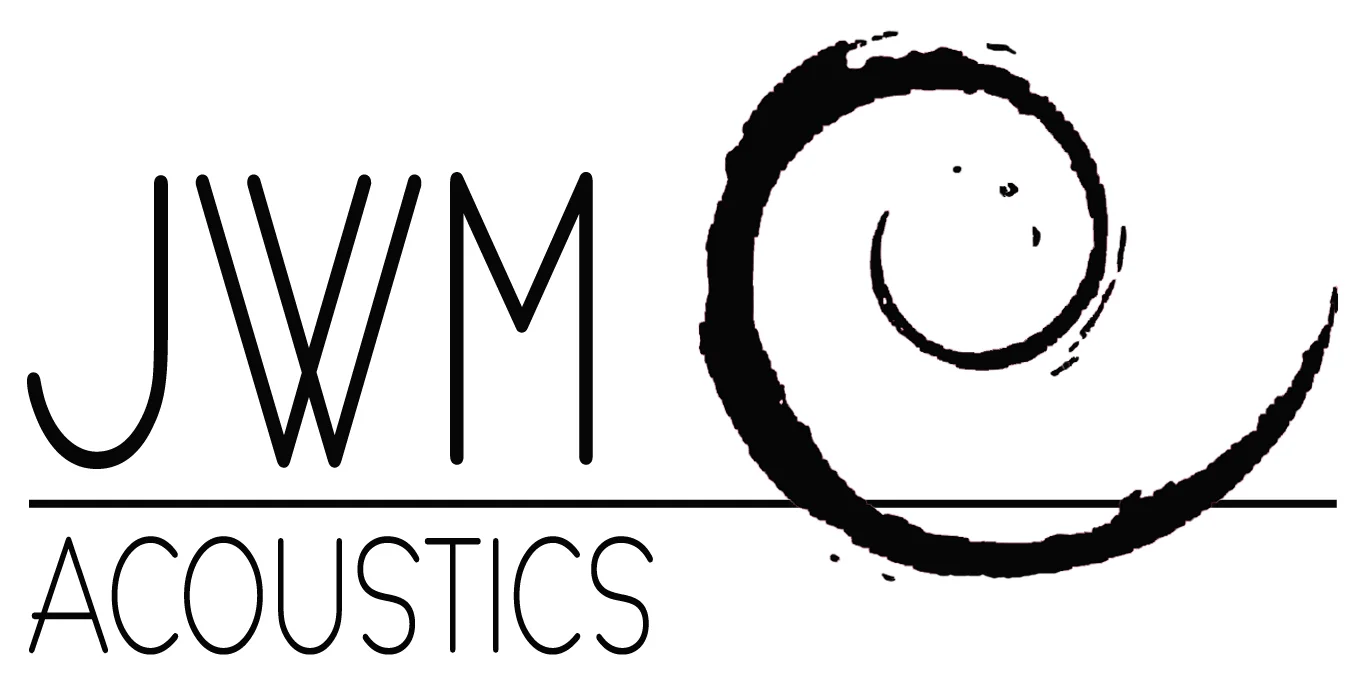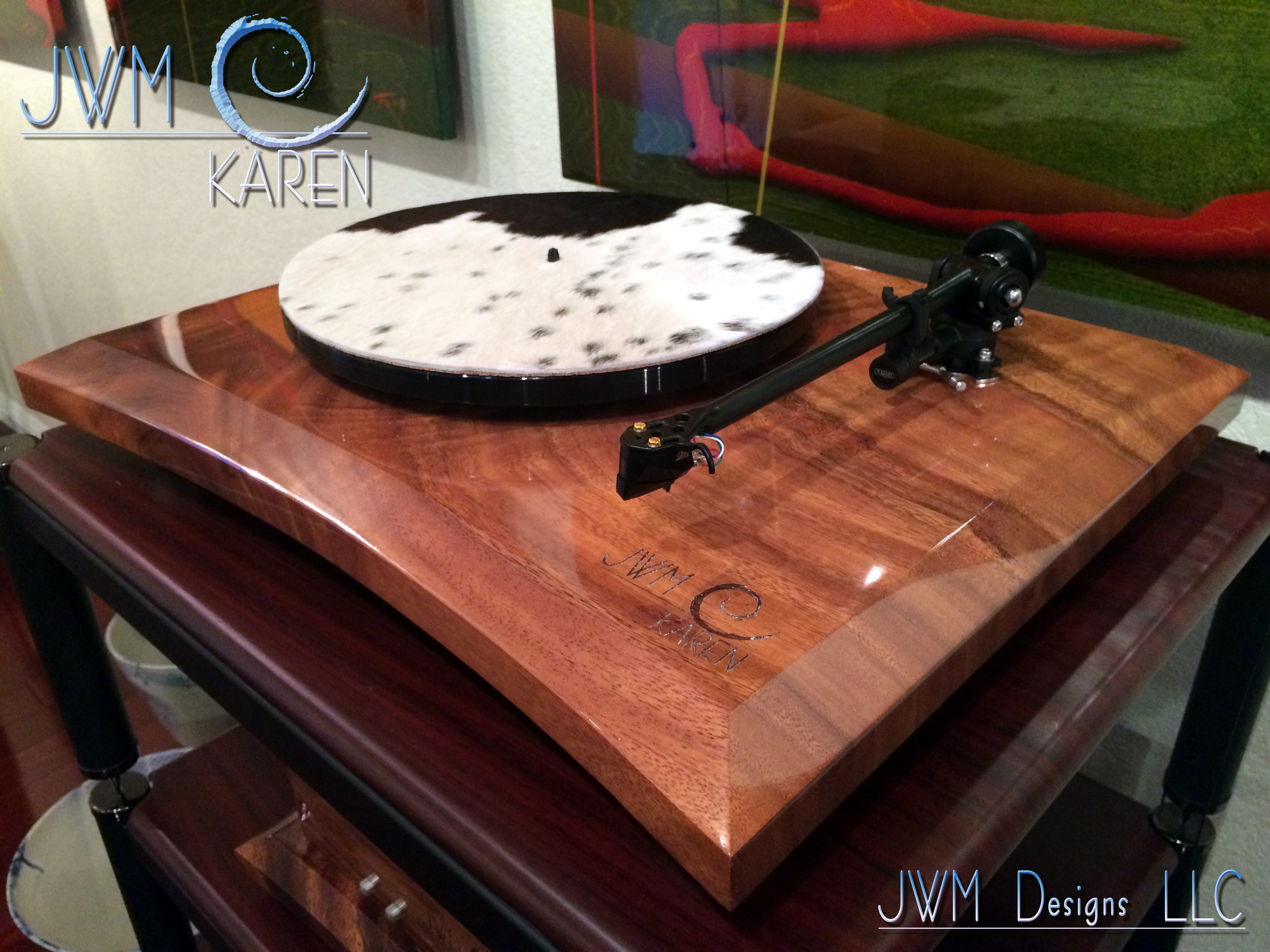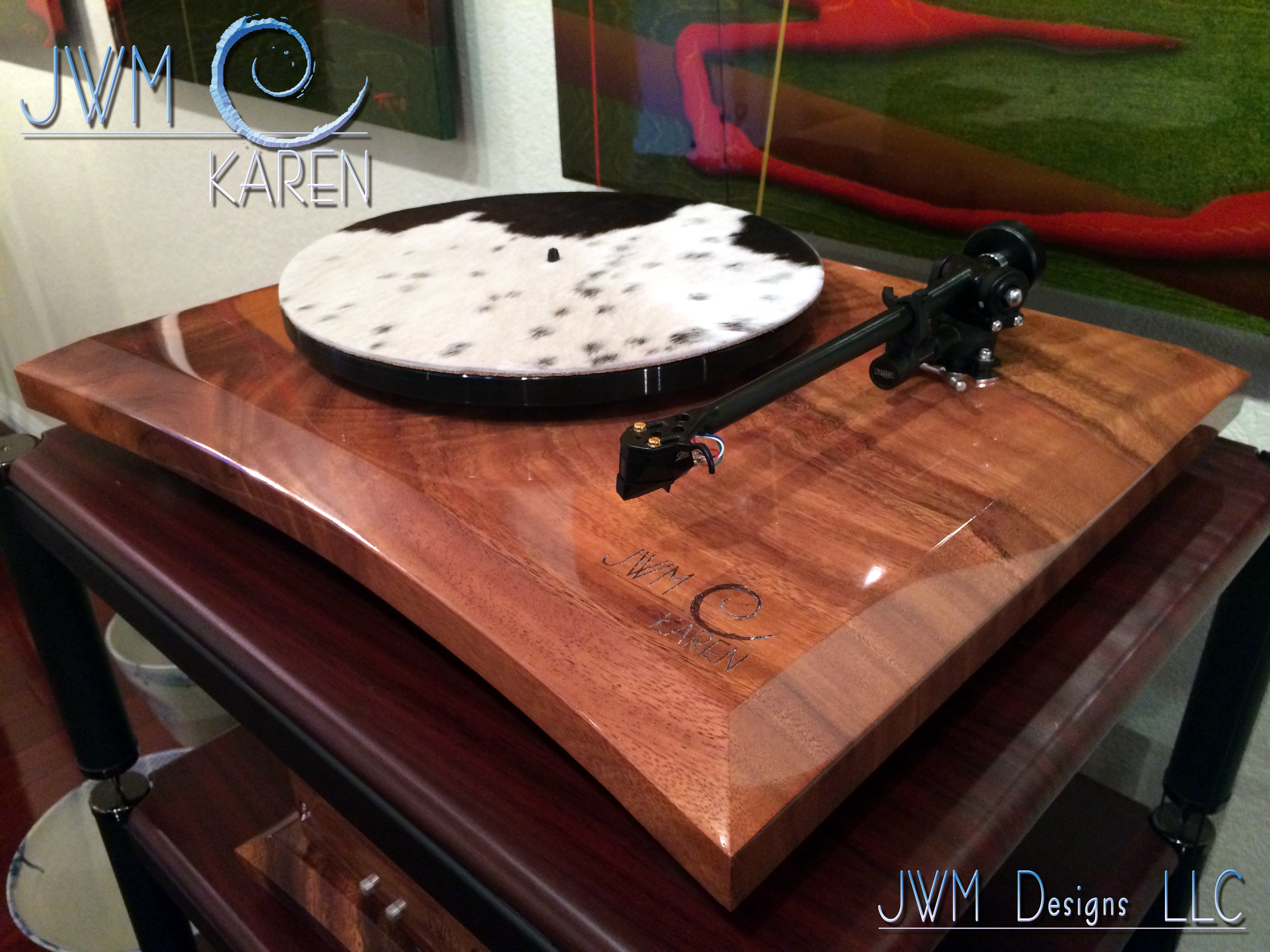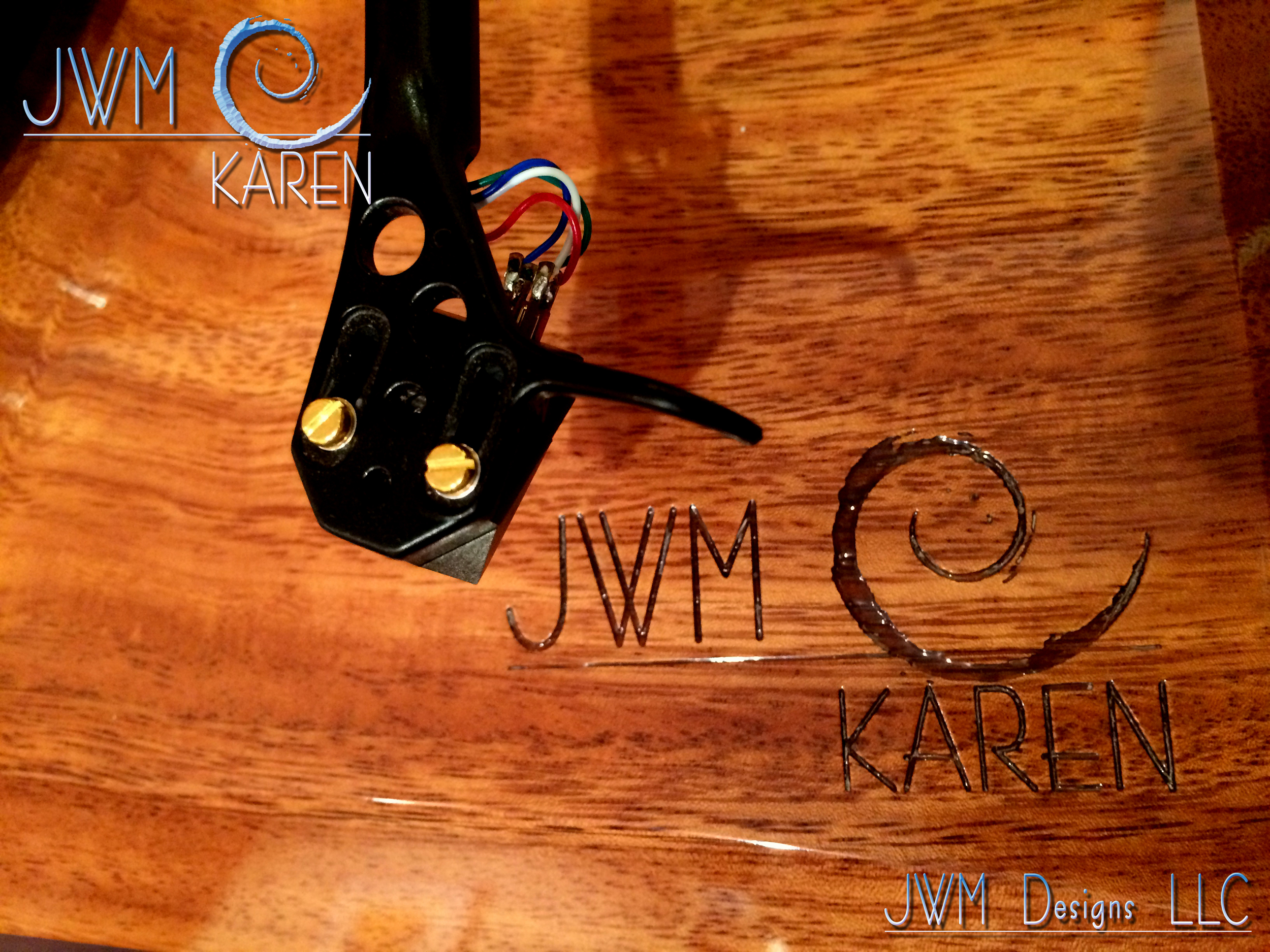LOCALLY GROWN TURNTABLES NOW AVAILABLE!
“Over the course of our lives, many things will come and go. The most important, will come back again and again. Each time they do, we gain a greater appreciation for their presence. A new respect. We begin to covet and value this presence and influence on our lives. In reality, these little visits mold who we are. The trick is to never take the return of these things for granted, or expect more than we deserve from them. This is true for things such as as a favorite record. Every few years, it seems you stumble upon one in the bin of a local flea market. Perhaps it is a certain flavor that hits you while dining at a new restaurant. It reminds you of a childhood friend, or a long lost aunt. Have you ever heard a sound that brings a flood of memories gushing in? A tear forms in your eye and you wonder where all the time has gone and what happened to tear you away for so long. For me, those things are far too many. One is a sound I have been chasing for many years, but remains elusive to say the least. Until now that is. A sound I longed to know again. An analog voice heard in childhood now rendered less scratchy and void of pops. A sound more rich and clean and deeper than ever before. For me, that thing also comes in the form of one next of kin. Her voice, like that sound, has had more influence on me than she knows and the respect I have for her grows by the day. Her voice may come and go like other things, but each time it returns, it is as rich and more comforting than any sound I know. These pieces will be named for that voice. My sister, Karen”…
I have been messing around with turntables for at least ¾ of my life. When nobody was home, I started tearing my Pops deck apart. I was too young to understand how it worked. That was the idea though. I had to figure out how that song from The Sting could make its way from that black disk into those AR speakers! HOW!?! As luck would have it, the answer really was not that complicated. Much like a microphone, a needle or stylus is vibrated by a groove in a record. That vibration is transformed into an electrical signal that flows to an amplifier. That amplifier boosts the signal to a higher power in order to feed a transducer, or speaker. That speaker transforms the electrical signal into pressurized sound waves that our ears can detect as music or your favorite comedy album… Viola!
Options, options, Options…
Ok, so now that we worked that out… the fact is that it ain’t that easy. “Ugh”. Fortunately, we have many tools available in this day and age to make it a bit easier than it was even a few years back. For instance, individual parts like tone arms and motors are so much more available and better than ever before. The parts are so much easier to modify and tune to your own taste as well! Do you want a DC motor? Done. A Sapphire bearing? Done. Computer controlled speed adjustment? Done. Glass platter? Done. Etc. Etc. and so on. Did I mention materials for the plinth yet? Oh, how about Padauk? Monkeypod? Wenge? All of the above?
REAL WOOD?!?
 Modern technology, as pertaining to damping materials, has made it possible to throw away the old ideas of what to use. In the past, it seemed the only material that worked for a plinth was the consistency of MDF or some other cheap material. To me, when I see a piece of furniture made from MDF and laminated with a fancy veneer, I simply can’t get past what is underneath. I understand that cost is important in manufacturing for the mass market, but really? The excuse that MDF has a repeatable consistency and its acoustic properties are far more predictable than that of wood is malarkey. Yes, I use MDF in some of my designs, but only FOR its acoustic properties. Not
Modern technology, as pertaining to damping materials, has made it possible to throw away the old ideas of what to use. In the past, it seemed the only material that worked for a plinth was the consistency of MDF or some other cheap material. To me, when I see a piece of furniture made from MDF and laminated with a fancy veneer, I simply can’t get past what is underneath. I understand that cost is important in manufacturing for the mass market, but really? The excuse that MDF has a repeatable consistency and its acoustic properties are far more predictable than that of wood is malarkey. Yes, I use MDF in some of my designs, but only FOR its acoustic properties. Not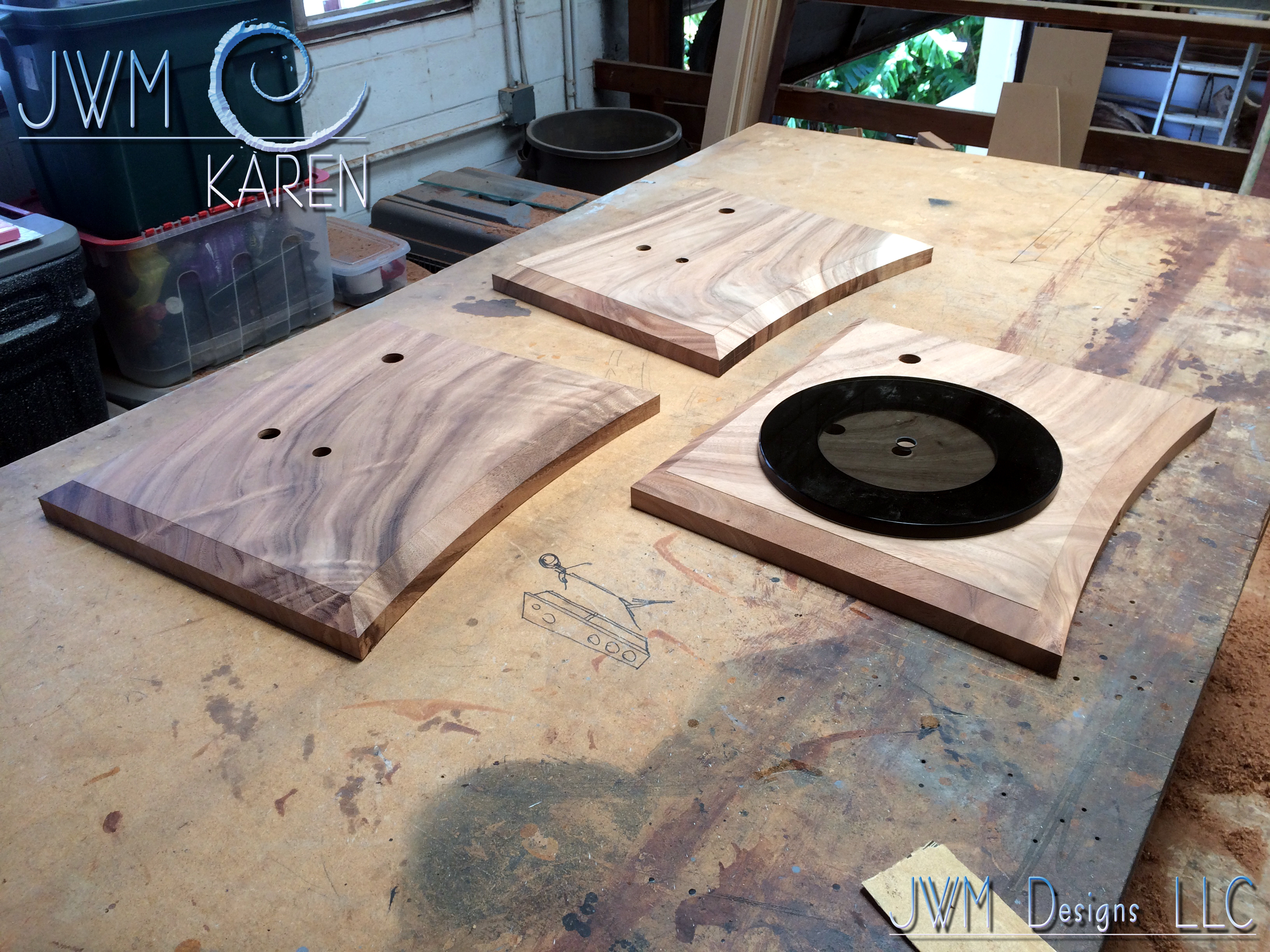 as an excuse. In the case of the Karen turntable, MDF or cheaper materials are simply not necessary or desirable. I look at these machines as a permanent fixture of the end users system and home. As you may know by now, I don’t build pieces as disposable electronics. I build instruments. Ones that should, like my speakers, be chosen as such. It will last. A very long time. Thus, the plinths and case work are treated as such. Solid hardwoods of any species you like may be selected. Choose wisely. This is the last turntable you will ever buy!
as an excuse. In the case of the Karen turntable, MDF or cheaper materials are simply not necessary or desirable. I look at these machines as a permanent fixture of the end users system and home. As you may know by now, I don’t build pieces as disposable electronics. I build instruments. Ones that should, like my speakers, be chosen as such. It will last. A very long time. Thus, the plinths and case work are treated as such. Solid hardwoods of any species you like may be selected. Choose wisely. This is the last turntable you will ever buy!
Down to business:
The Karen is a direct modification for the P series turntables from Rega. Any of the tables in this line are a direct drop-in. Also, being that the pattern and holes are tapped to Rega and SME standards, any other manufacturers parts using this mounting pattern can be fit to each plinth. The plinth is designed to be a functioning modern classic. Each is constructed of solid hardwoods and finished in the very same 12 step process as my speaker systems. Each plinth is as unique as the trees in the forest and can be ordered in any wood desired.
Vibration:
The use of hardwoods is now as easy and predictable as any other material available. In the case that stray vibrations need to be damped, I use many of the same materials I have in my quiver for my speaker cabinets. As you would guess, the harder the wood, the higher the resonant frequency of the plinth. The grain variations within the wood help to break up standing waves within the table. I also use any number of vibration control feet depending on what the end user feels most comfortable with. All of these factors are looked at on a table to table basis, thus each machine is as unique as the person who chooses it. Now how could this possibly be more fun!
Technical stuff and more options:
 The arm cutout is at the 222mm position from the center of the platter bearing. Meaning you are welcome to choose any 9” arm you prefer with only a slight up charge for installation. If you choose to buy a complete setup, the standard package features a Rega arm. Again, you may specify which arm you like, and I am happy to make the necessary adjustments. Should you choose a custom arm length from another manufacturer, just say the word. I am happy to create a custom piece to your specifications.
The arm cutout is at the 222mm position from the center of the platter bearing. Meaning you are welcome to choose any 9” arm you prefer with only a slight up charge for installation. If you choose to buy a complete setup, the standard package features a Rega arm. Again, you may specify which arm you like, and I am happy to make the necessary adjustments. Should you choose a custom arm length from another manufacturer, just say the word. I am happy to create a custom piece to your specifications.
 The motor is mounted in standard Rega fashion. Well, kind of! The length of the belt and pulley is standard, but that is where it ends. I have created a system that will fit most standard Rega mounts. I have also chosen as my standard the same motor assembly as the P1-3 and 6 tables from Rega. (Do you see a pattern here?) I
The motor is mounted in standard Rega fashion. Well, kind of! The length of the belt and pulley is standard, but that is where it ends. I have created a system that will fit most standard Rega mounts. I have also chosen as my standard the same motor assembly as the P1-3 and 6 tables from Rega. (Do you see a pattern here?) I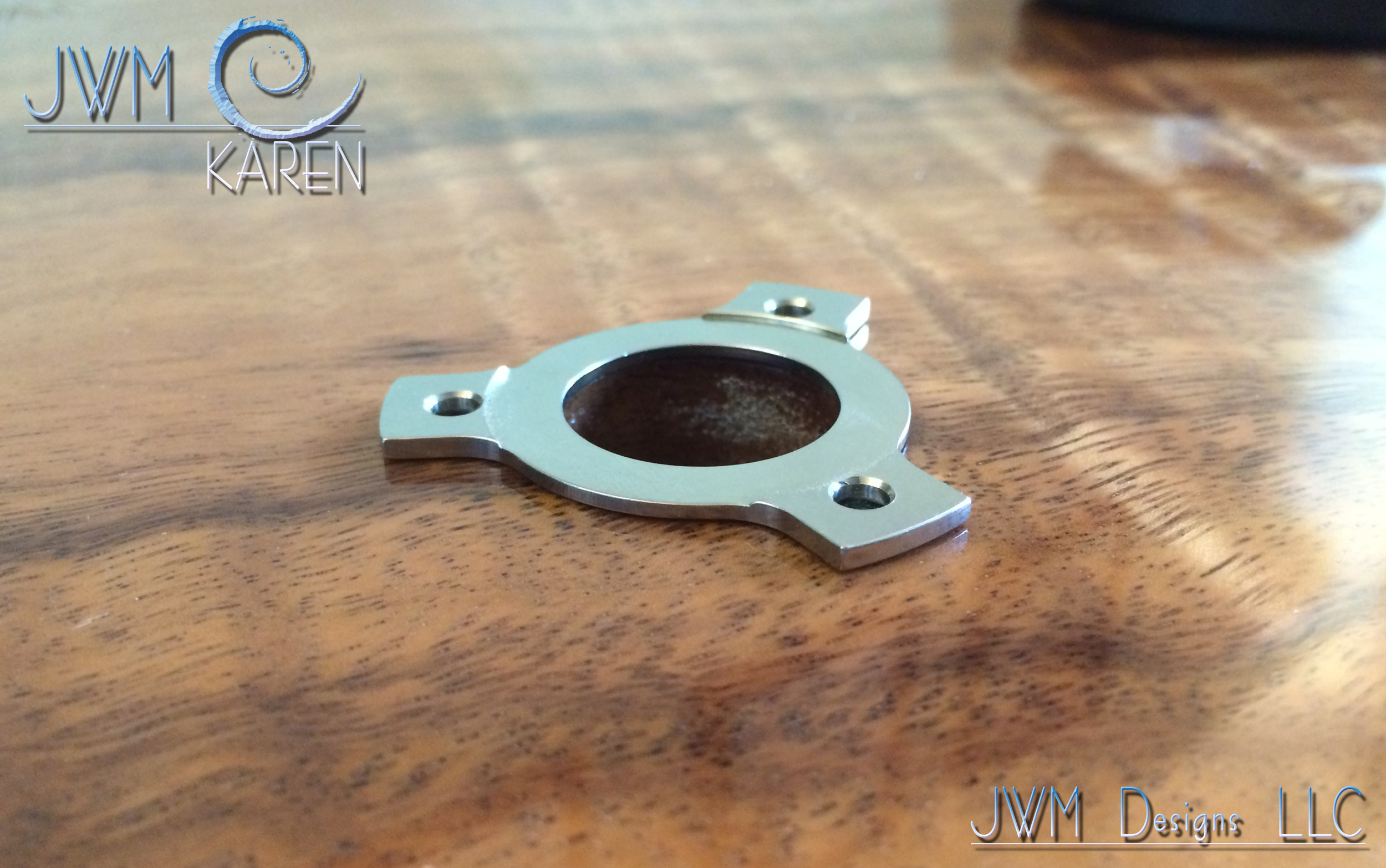 bolt the motor through the plinth and isolate it with further damping. The materials I use are similar to those used for vibration control in my speakers. This significantly lowers the noise floor. Stable and quite is the name of the game in good analog sound reproduction. That is exactly what you get from the Karen.
bolt the motor through the plinth and isolate it with further damping. The materials I use are similar to those used for vibration control in my speakers. This significantly lowers the noise floor. Stable and quite is the name of the game in good analog sound reproduction. That is exactly what you get from the Karen.
Voila!!!
Whether you are a seasoned audiophile, or still wet behind the ears, these machines will bring a smile to your face for many years. The sound is rich and clean with serious transit response and timbre. For pop, modern rock, or jazz they have pace, depth and speed. For those inclined to the classical side of the spectrum, these decks throw a deep and wide sound stage with great placement resolution of each instrument. Frequency extremes are well defined and so are the presence regions of the spectrum for vocal recording. In other words, this deck does it all!
I hope you enjoy the Karen as much as I do. After all, music is what it’s all about.
Keep your records clean ya’ll!
Joshua W. Miles
PS: These pieces are hand made in Hawai'i!
Each one of these turntables is lovingly hand made on O'ahu. When possible, I use locally grown wood. Each piece is chosen, milled, sanded, cut and finished in Honolulu.
If you would like to see, hear, or better yet, order one of these musical creations please feel free to contact me any time. Dealer inquiries are always welcome!
Joshua W. Miles Designs LLC (808)349-6661 (808)421-9991 PO BOX 944 Kailua, HI. 96734 joshuawmilesdesigns@yahoo.com
